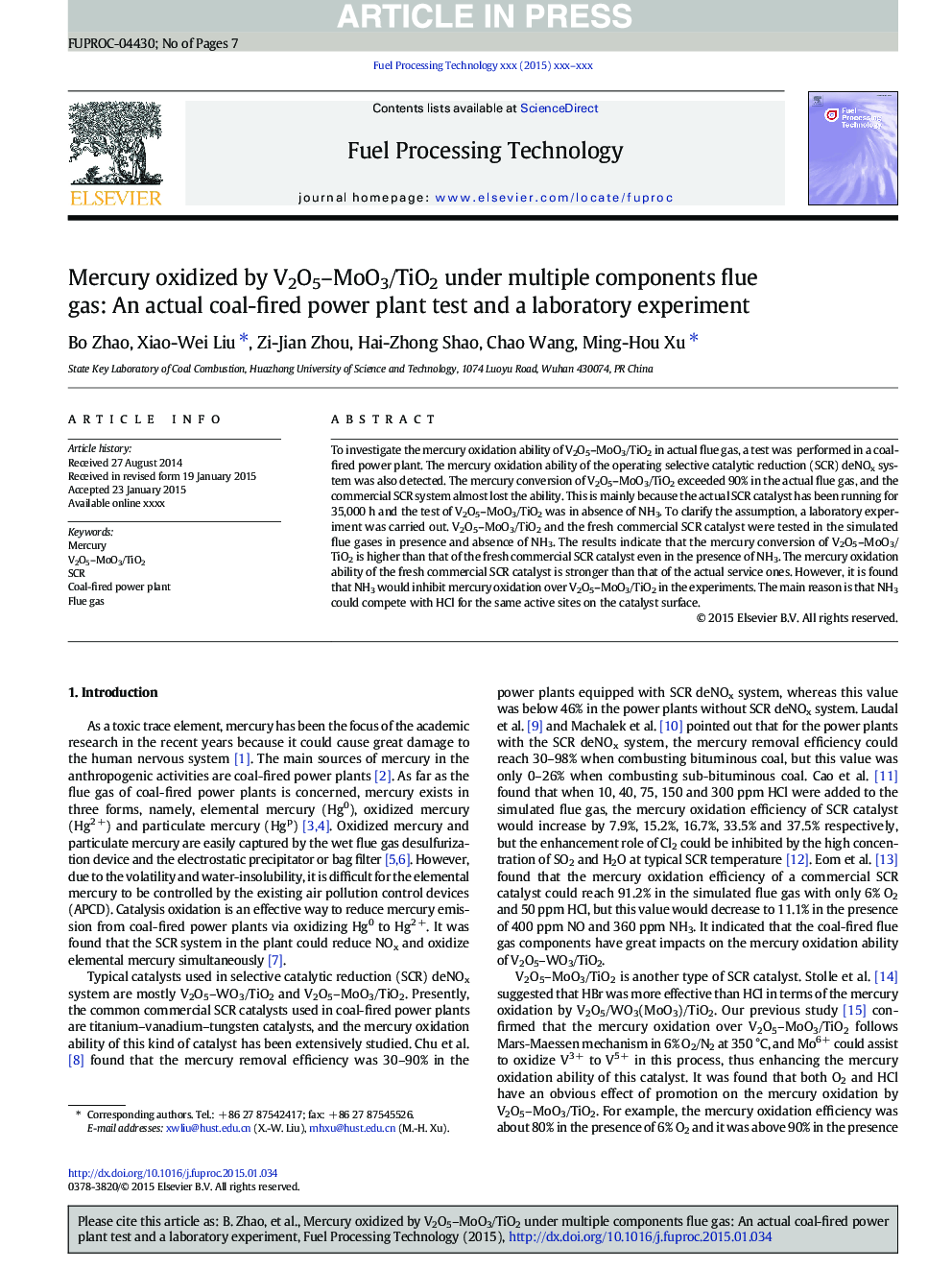| Article ID | Journal | Published Year | Pages | File Type |
|---|---|---|---|---|
| 6657036 | Fuel Processing Technology | 2015 | 7 Pages |
Abstract
To investigate the mercury oxidation ability of V2O5-MoO3/TiO2 in actual flue gas, a test was performed in a coal-fired power plant. The mercury oxidation ability of the operating selective catalytic reduction (SCR) deNOx system was also detected. The mercury conversion of V2O5-MoO3/TiO2 exceeded 90% in the actual flue gas, and the commercial SCR system almost lost the ability. This is mainly because the actual SCR catalyst has been running for 35,000Â h and the test of V2O5-MoO3/TiO2 was in absence of NH3. To clarify the assumption, a laboratory experiment was carried out. V2O5-MoO3/TiO2 and the fresh commercial SCR catalyst were tested in the simulated flue gases in presence and absence of NH3. The results indicate that the mercury conversion of V2O5-MoO3/TiO2 is higher than that of the fresh commercial SCR catalyst even in the presence of NH3. The mercury oxidation ability of the fresh commercial SCR catalyst is stronger than that of the actual service ones. However, it is found that NH3 would inhibit mercury oxidation over V2O5-MoO3/TiO2 in the experiments. The main reason is that NH3 could compete with HCl for the same active sites on the catalyst surface.
Related Topics
Physical Sciences and Engineering
Chemical Engineering
Chemical Engineering (General)
Authors
Bo Zhao, Xiao-Wei Liu, Zi-Jian Zhou, Hai-Zhong Shao, Chao Wang, Ming-Hou Xu,
